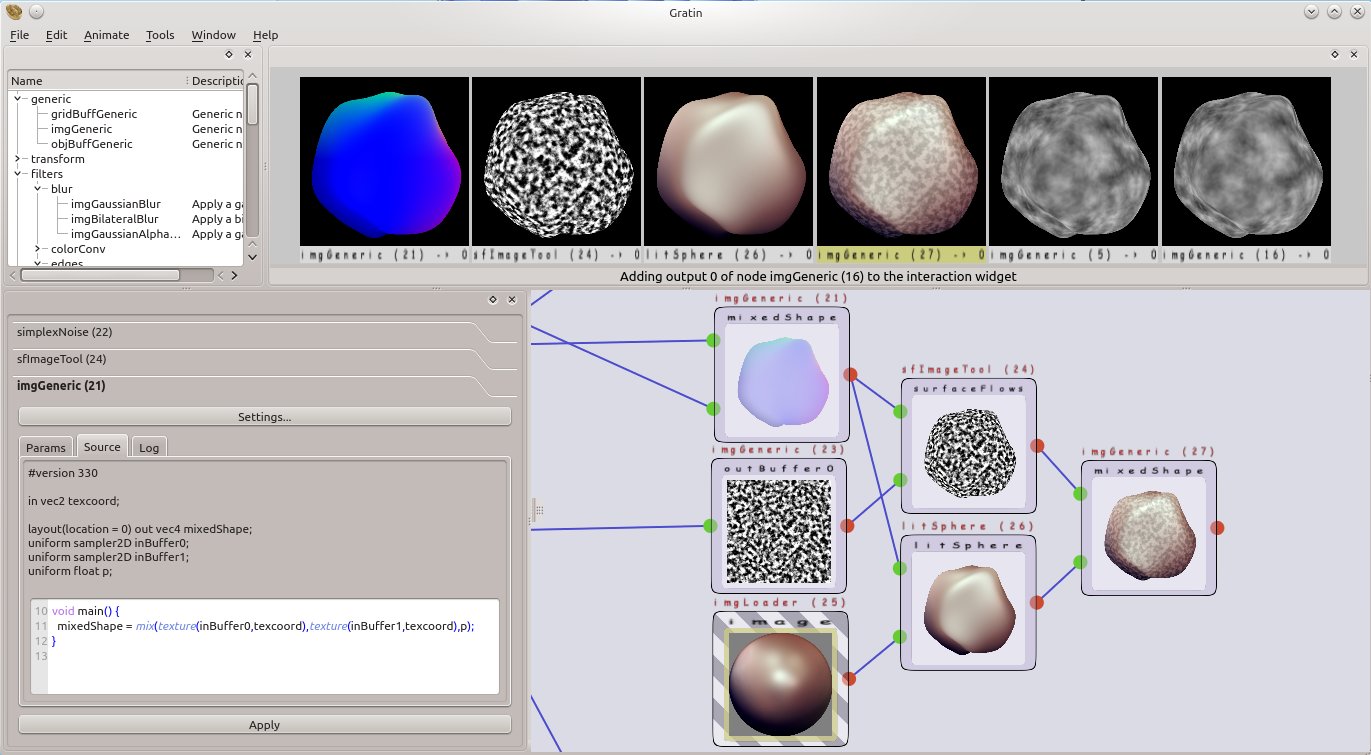Section: New Software and Platforms
Gratin
Participant : Romain Vergne [contact] .
Gratin is a node-based compositing software for creating, manipulating and animating 2D and 3D data. It uses an internal direct acyclic multi-graph and provides an intuitive user interface that allows to quickly design complex prototypes. Gratin has several properties that make it useful for researchers and students. (1) it works in real-time: everything is executed on the GPU, using OpenGL, GLSL and/or Cuda. (2) it is easily programmable: users can directly write GLSL scripts inside the interface, or create new C++ plugins that will be loaded as new nodes in the software. (3) all the parameters can be animated using keyframe curves to generate videos and demos. (4) the system allows to easily exchange nodes, group of nodes or full pipelines between people. In a research context, Gratin aims at facilitating the creation of prototypes, testing ideas and exchanging data. For students, Gratin can be used to show real-time demos/videos, or help learning how to program with the GPU. Gratin has already been used for creating new computer graphics tools but also for designing perceptual experiments. Most of the work published by R. Vergne was done with Gratin.



